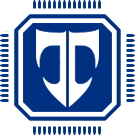K-Line
K-Line on SIMK43 runs at 10400 baud and uses the KWP2000 protocol for diagnostic communication.
Connection points
ECU
- If you have 1.6 or 2.0 without immobilizer installed:
Good news! Your K-Line pins (OBD2/MCC) are connected directly to the K-line pin on the ECU (2.0 - 77)
- If you have 1.6 or 2.0 with immobilizer installed:
Your K-Line pins (OBD2/MCC) are connected to BCM's "Diagnosis" pin (BCM-IM, pin 19). THERE IS NOTHING CONNECTED TO K-LINE PIN AT THE ECU!! (2.0 77). Instead, all K-line stuff is connected to the ECU's W-Line (2.0 - 47)
- If you have 2.7 with or without immobilizer installed:
Your K-Line pins (OBD2/MCC) are connected to BCM's "Diagnosis" pin (BCM-IM, pin 19). Your K/Immo-Line pin at the ECU (C133-1, pin 3) is connected to BCM's "Immo W-line" (BCM-IM, pin 20). 2.7 ECUs don't have a separate K and W line - it's all integrated in one pin, you don't have nothing to worry about.
KWP2000
To start communication, you need to use Fast Init - so bring the K-line down for exactly 25ms, then up for 25ms followed by StartCommunication request. Python example of that using a FTDI cable can be found in GKBus code.
ID of the ECU is 0x11, and as a diagnostic device you should be using ID 0xF1. So an example command and response would look like this:
Diagnostic device: 82 11 F1 27 01 AC (security access request)
ECU response: 83 F1 11 67 02 34 22
Baudrate
By default, SIMK43 uses 10400 baud. On some ECUs (so far testing revealed that <2005 ECUs might not support that), baudrate can be manipulated by additional undocumented parameter of the StartDiagnosticSession service:
0x01: 10400
0x02: 20000
0x03: 40000
0x04: 60000
0x05: 120000
Challenge-response calculation
SIMK43/41 uses a 2 byte seed and 2 byte key for security access. Until a write-up about the algorithm is prepared, you can take a look at it's Python implementation in GKFlasher: https://github.com/Dante383/GKFlasher/blob/15a715b18f2119d697a5ceed00f6383f690c4a23/ecu.py#L42
Input-Output local identifiers
0x10 - check engine light
0x1A - cooling fan relay high
0x1B - cooling fan relay low
0x23 - idle speed actuator
0x24 - cvvt valve
0x50 - adaptive values
Routines by local identifier
0x00 - erase program section
0x01 - erase calibration section
0x02 - verify and mark blocks as ready to execute. Needs to be called after flashing
0x03 - unknown. requires security access, returned 0x33 0xE0 on a bench ecu
0x04 - unknown, returns 0x22 - Conditions Not Correct Or Request Sequence Error
0x05 - unknown, returns 0x22 - Conditions Not Correct Or Request Sequence Error
0x12 - query immobilizer info: 2 bytes number of keys learnt, 2 bytes immo status (01 = learnt), 2 bytes key status (00 - not learnt)
0x13 - needs to be called before immobilizer password teaching/changing
0x14 - needs to be called before immobilizer teaching.
0x15 - needs to be called before ECU immobilizer reset
0x16 - needs to be called before putting immobilizer in limp home mode
0x17 - input new limp home password
0x18 - activate limp home mode. takes user-provided (default: 2345) password as parameters
0x19 - confirm limp home password change. takes 0x01 as a parameter
0x1A - input 6 digit immobilizer password. Needs to be called before teaching, resetting or other actions modifying the immo system. Takes password and 6x 0xFF as parameters
0x1B, 0x1C, 0x1D, 0x1E - teach keys 1,2,3,4. Takes 0x01 as a parameter. If you teach key (for example key 1, routine 0x1B) and don't wish to teach any more, you need to call next key's routine with 0x02 as a parameter (so if you teach key 1 with routine 0x1B,0x01 then you need to call 0x1C,0x02)
0x20 - reset ECU immo. Takes 0x01 as a parameter
0x25 - needs to be called before neutralizing smartra
0x26 - confirm neutralizing smartra. takes 0x01 as a parameter
